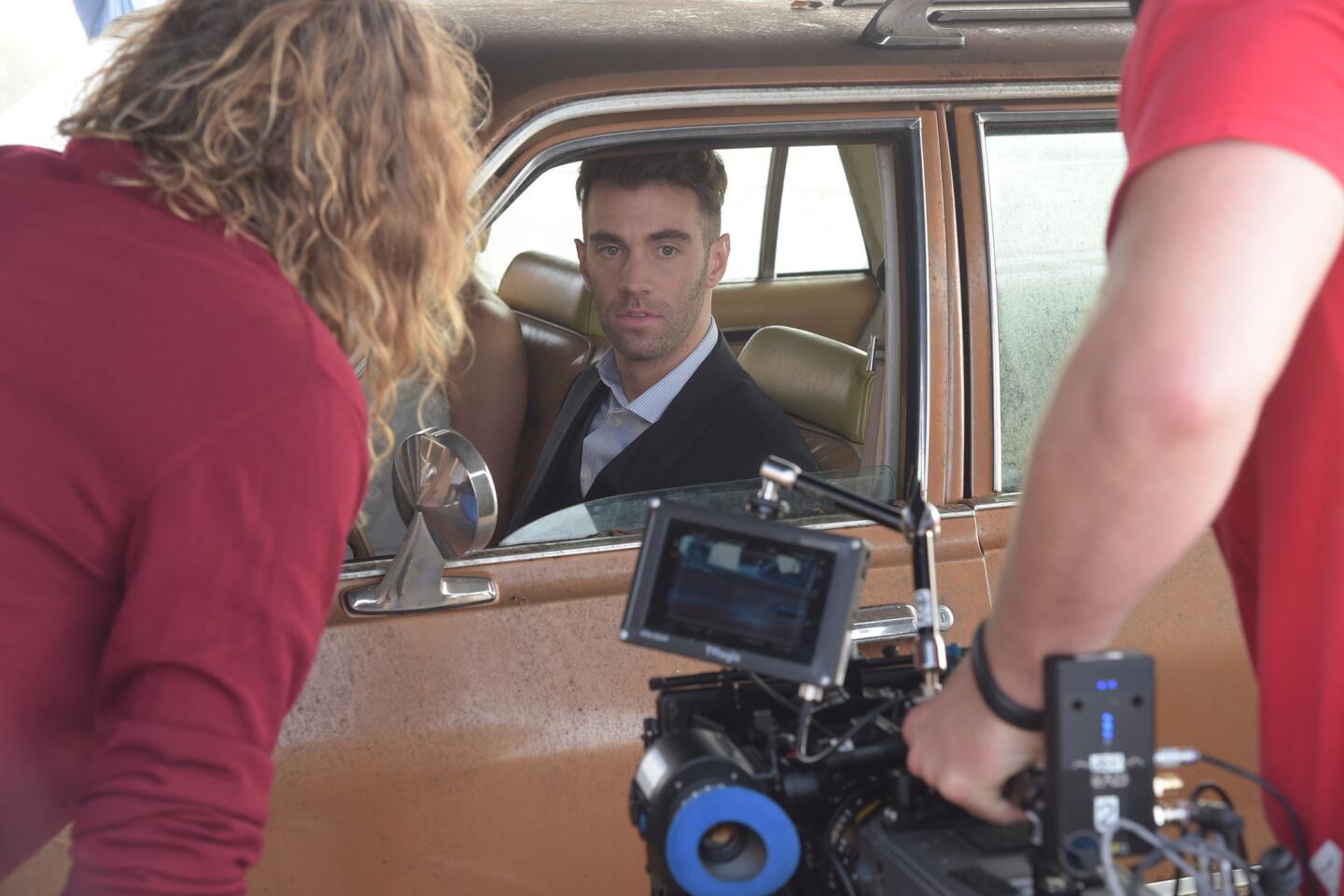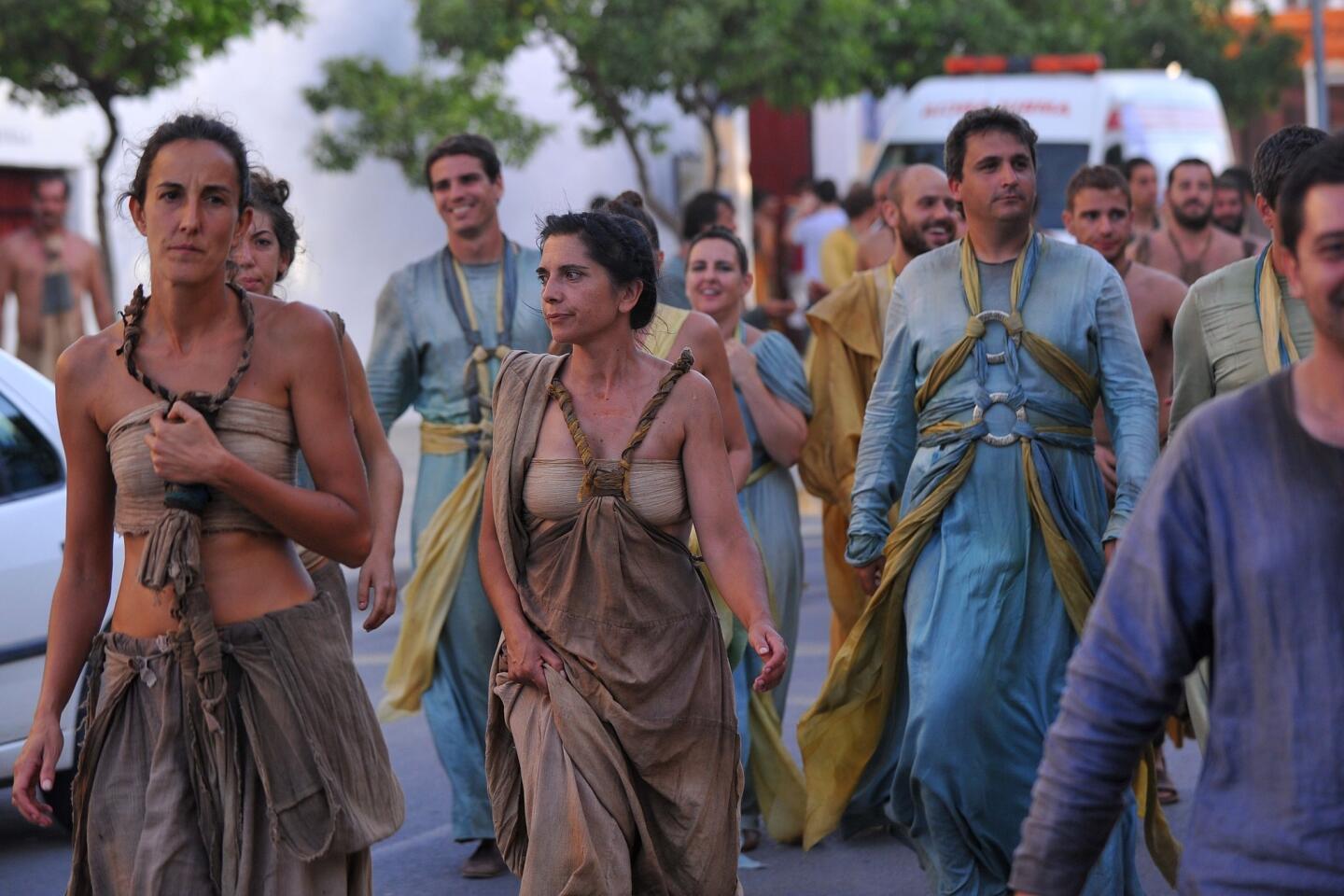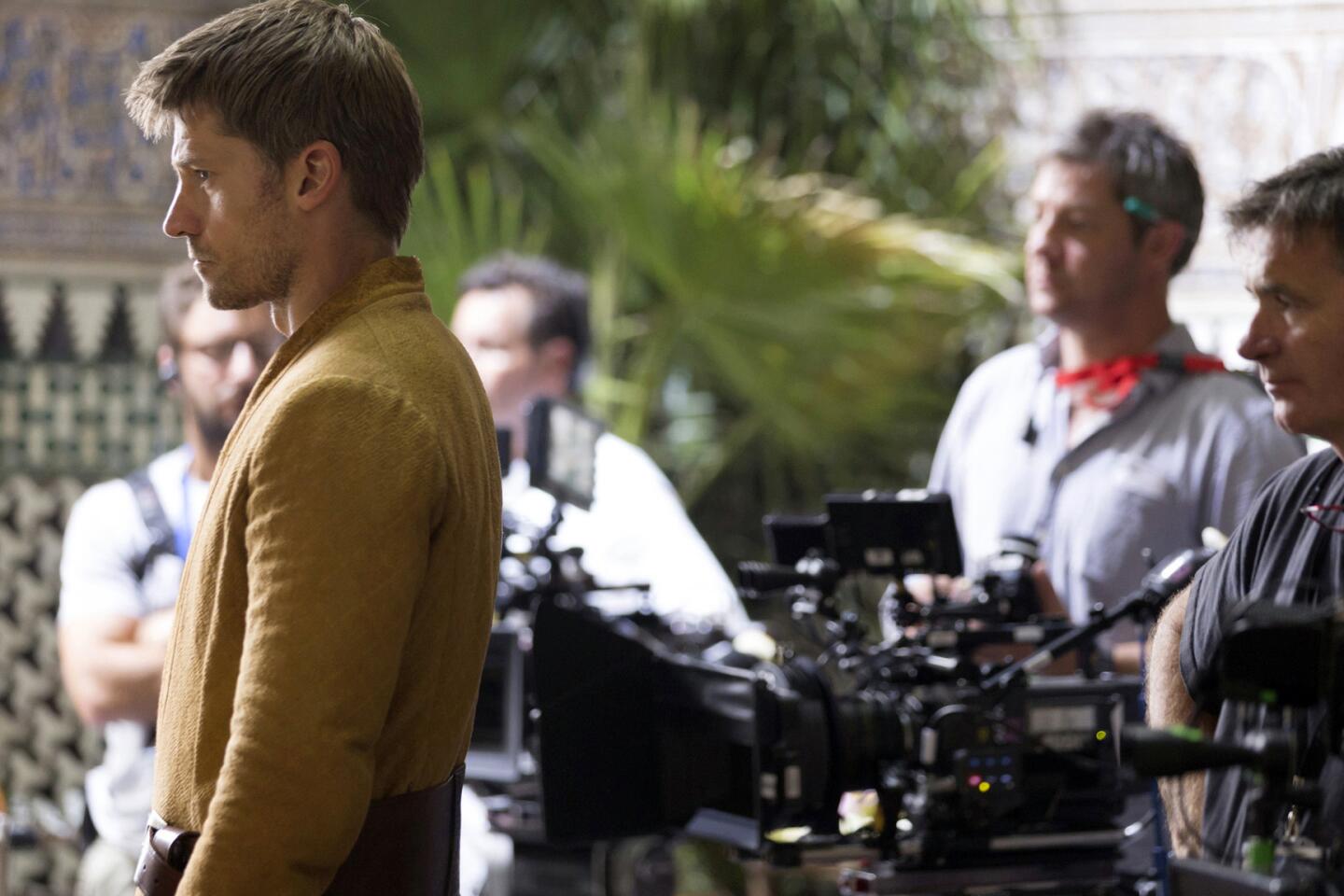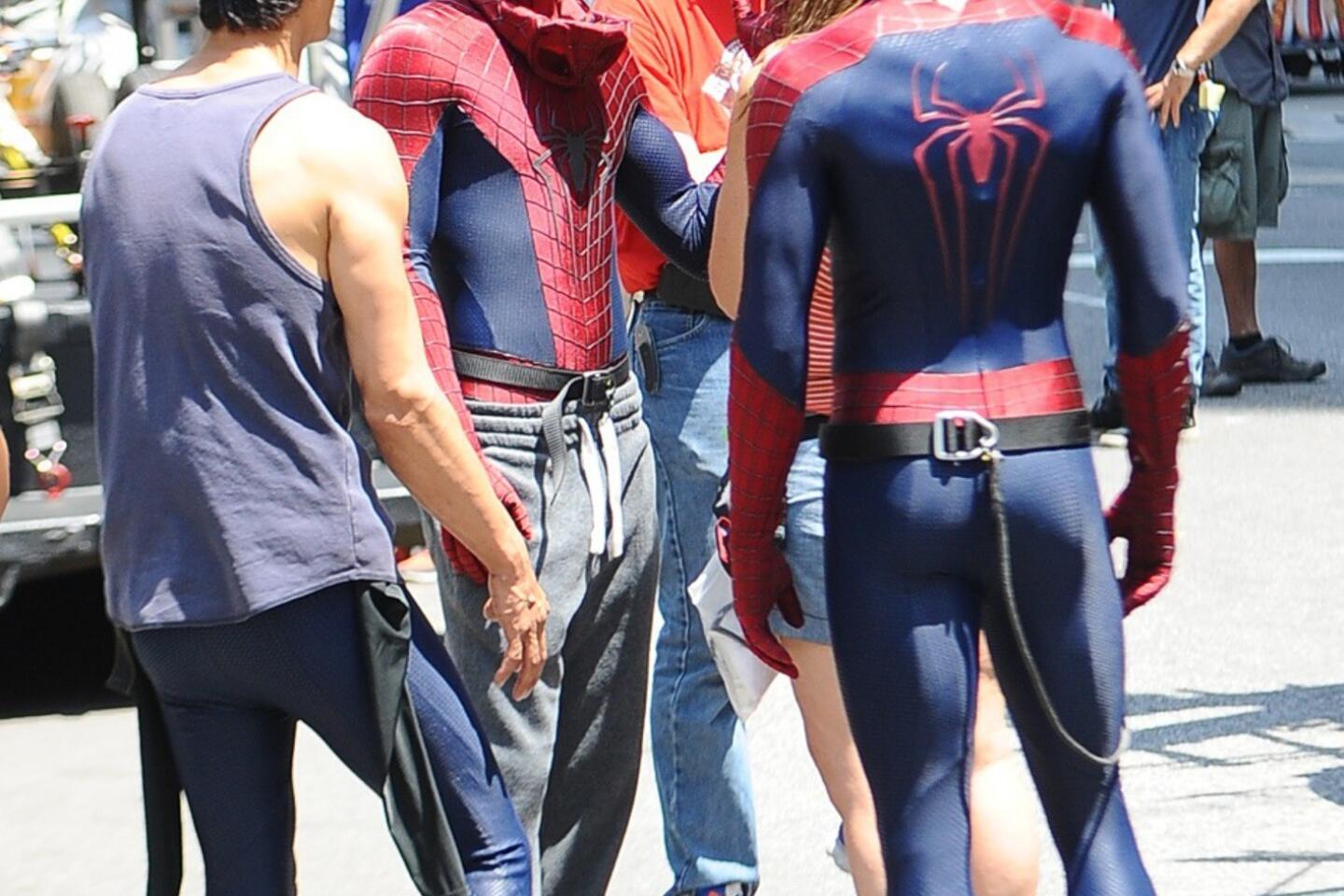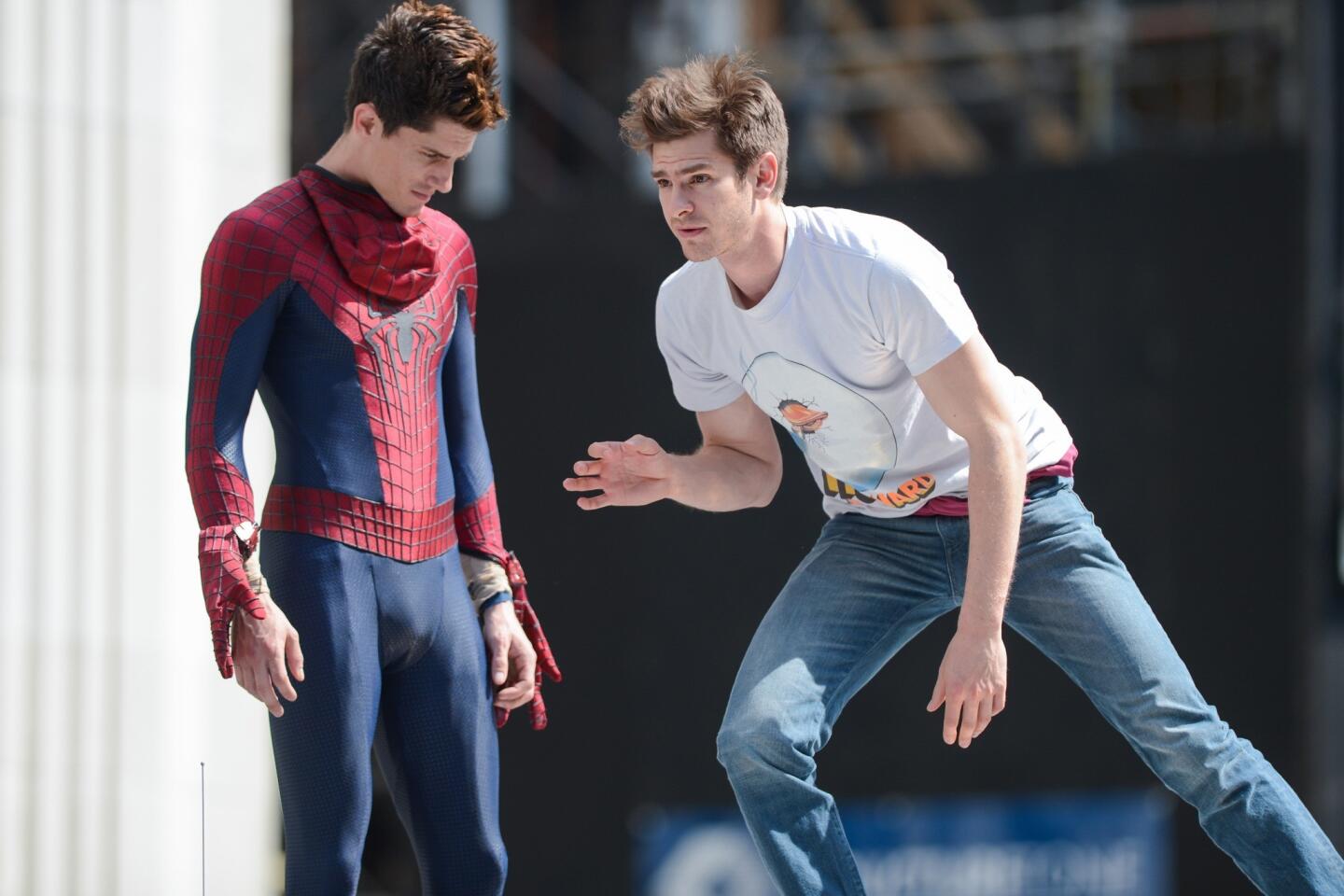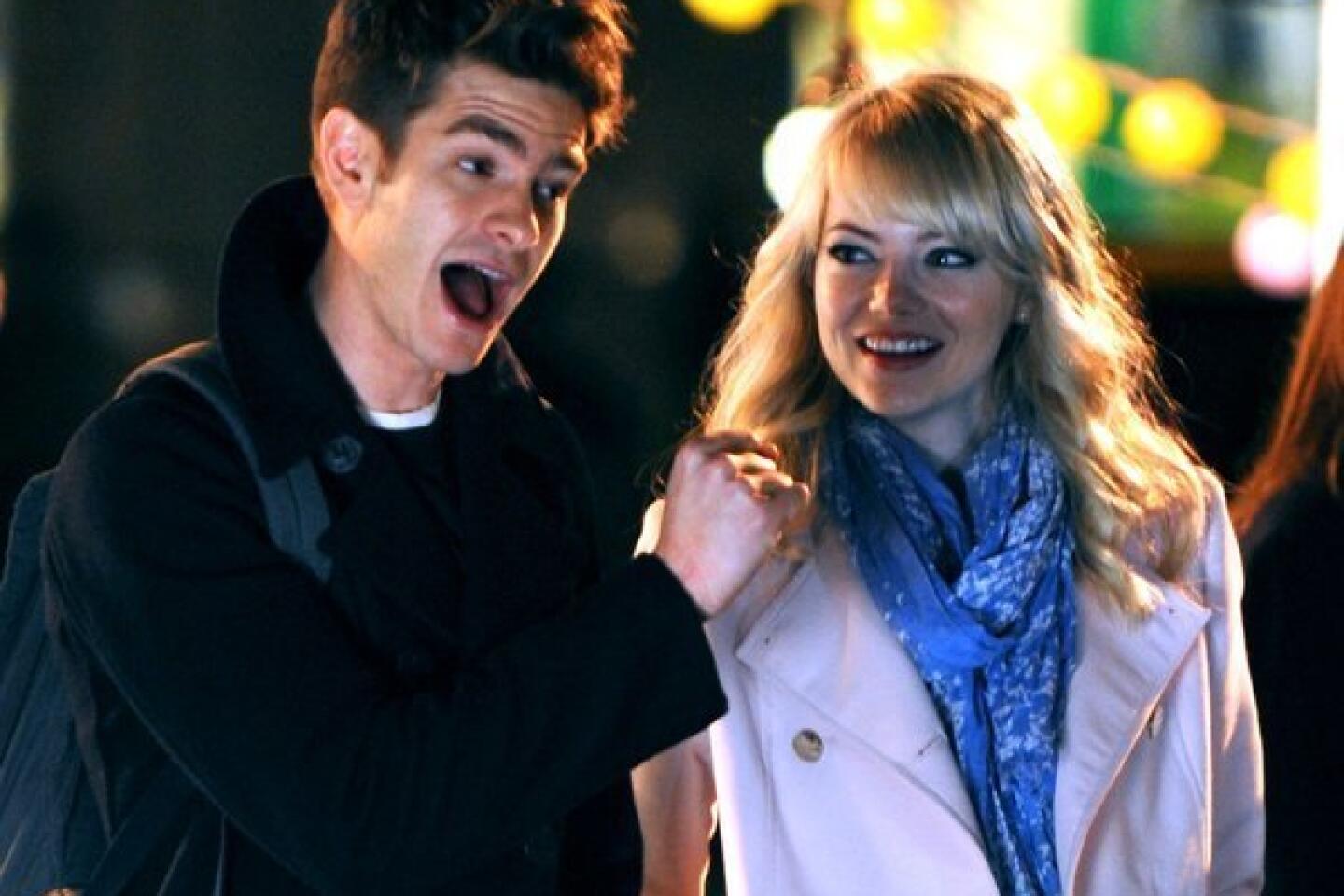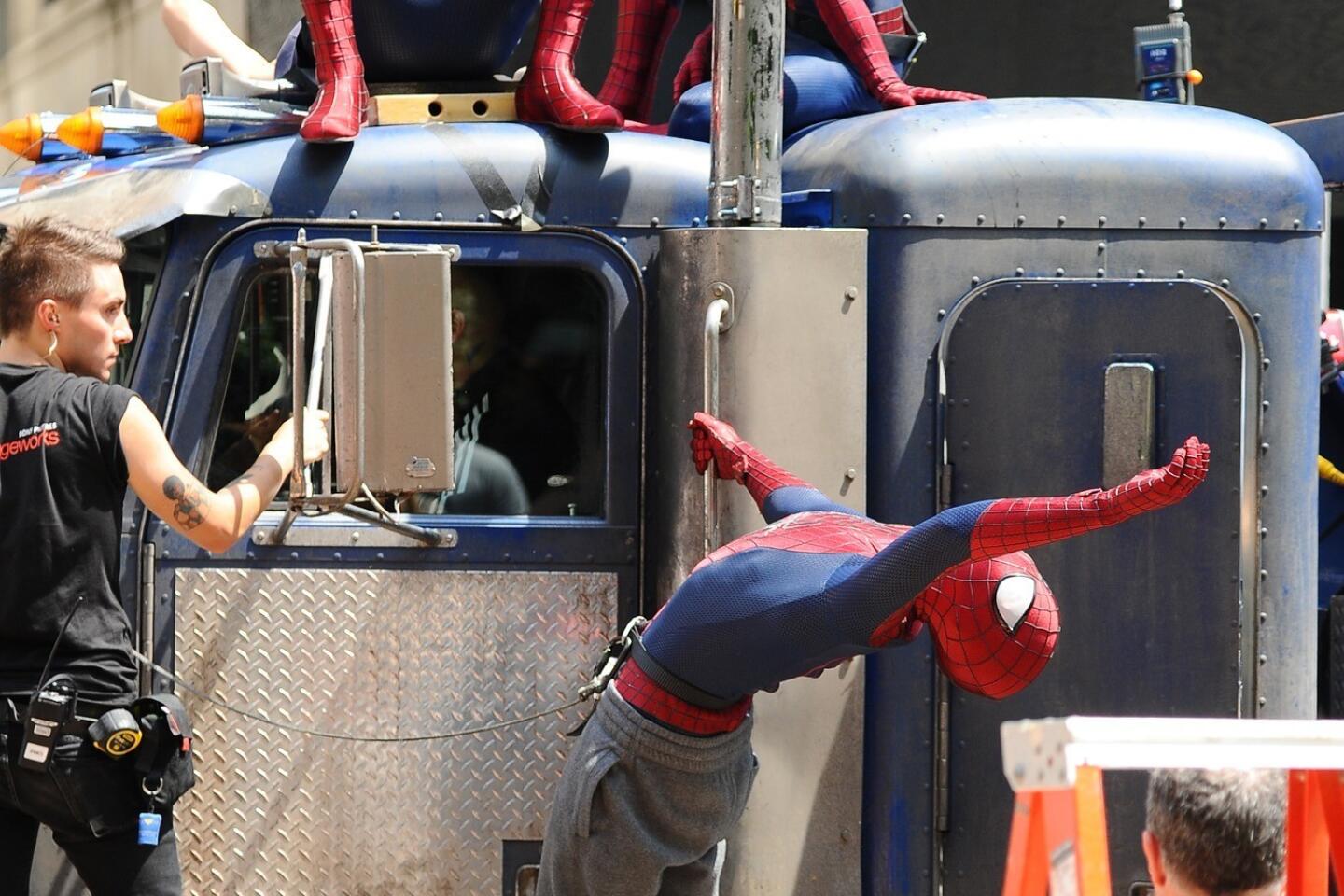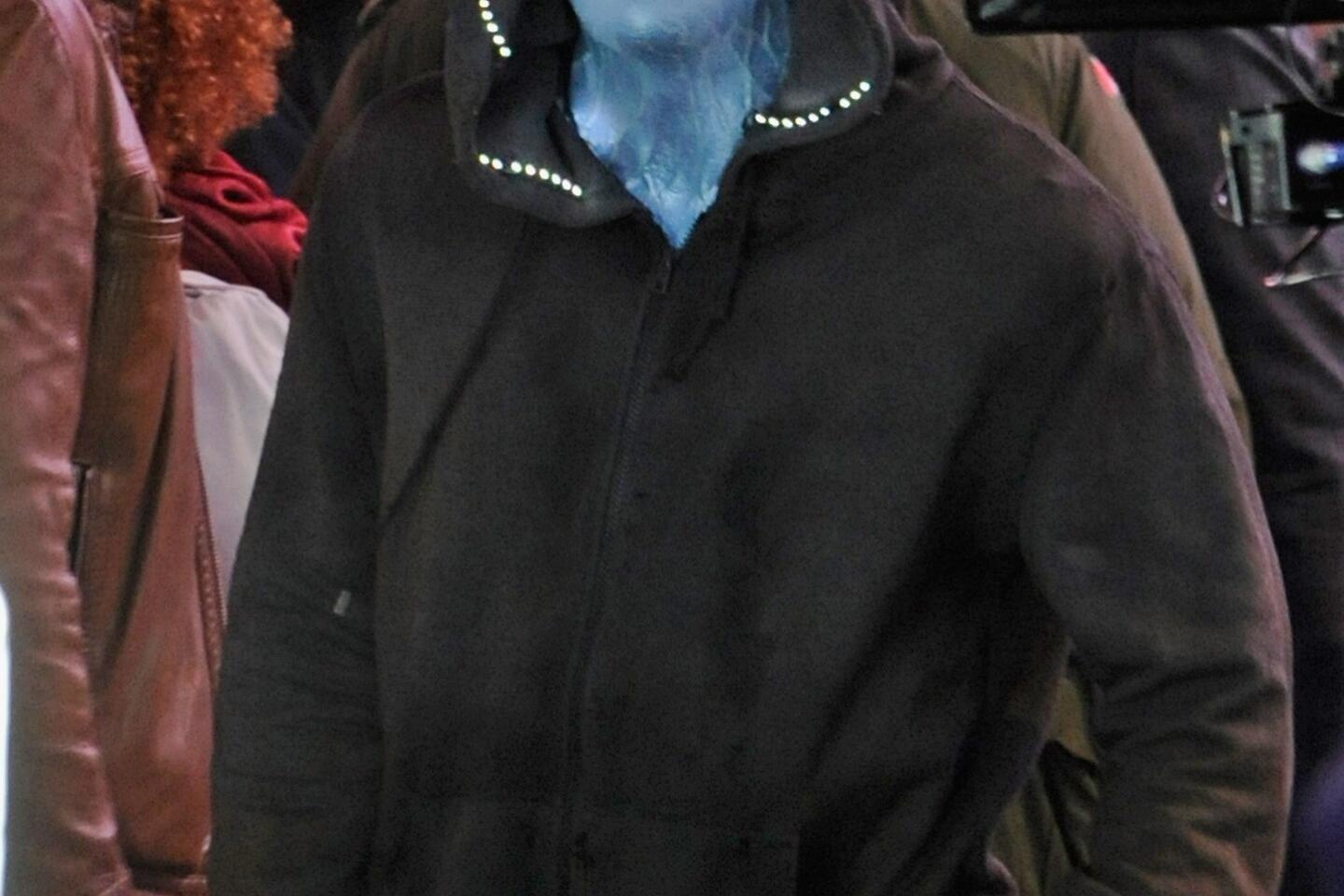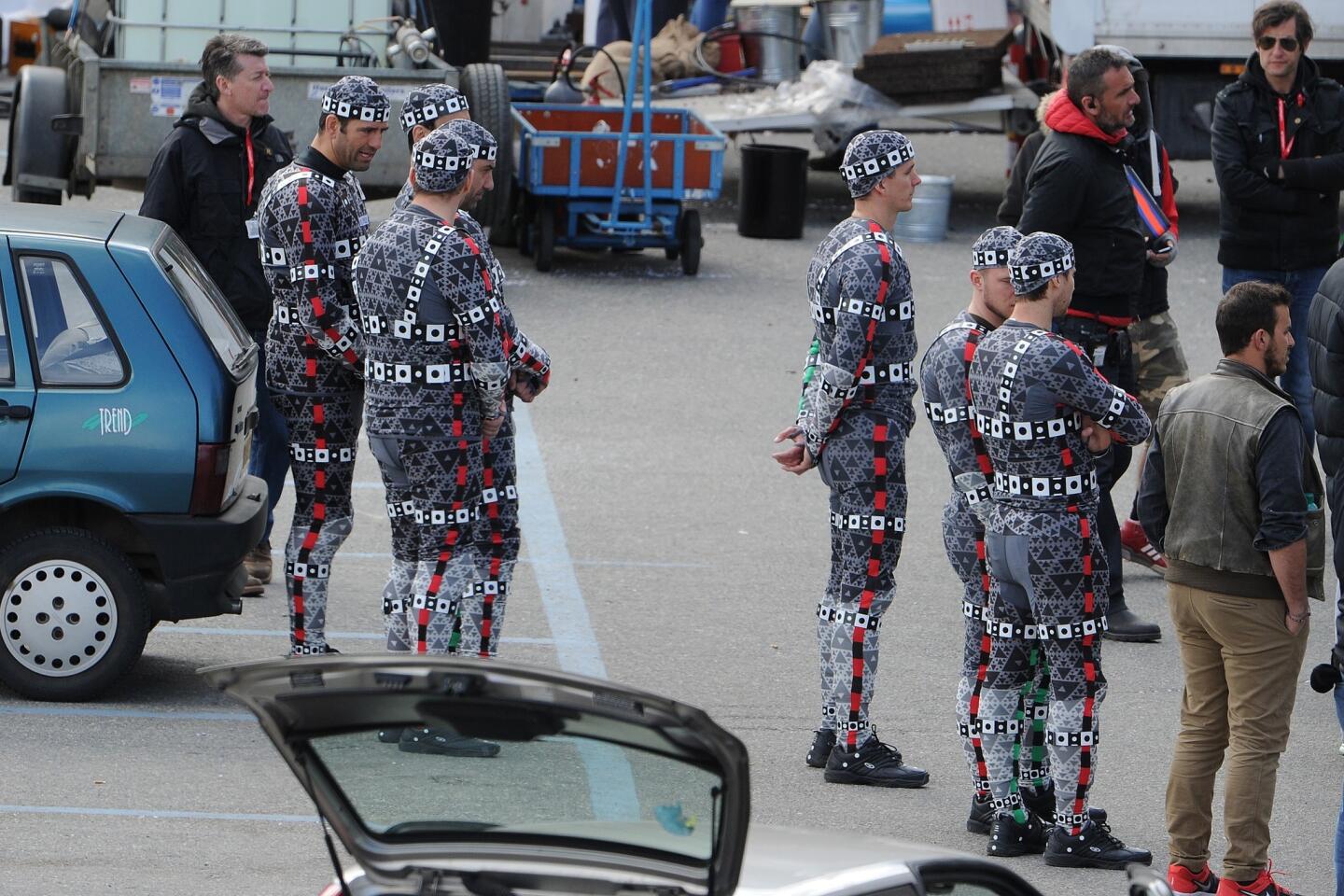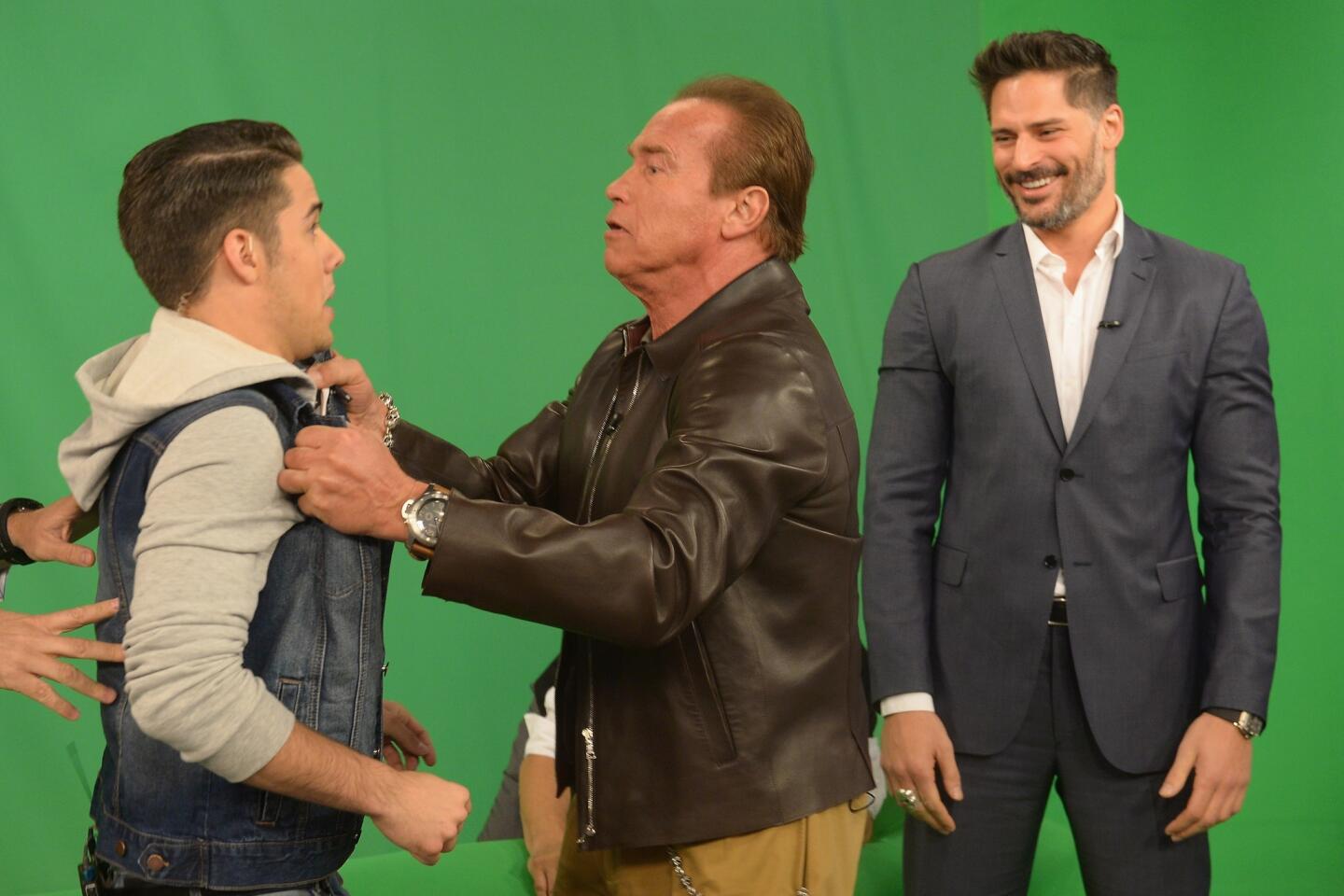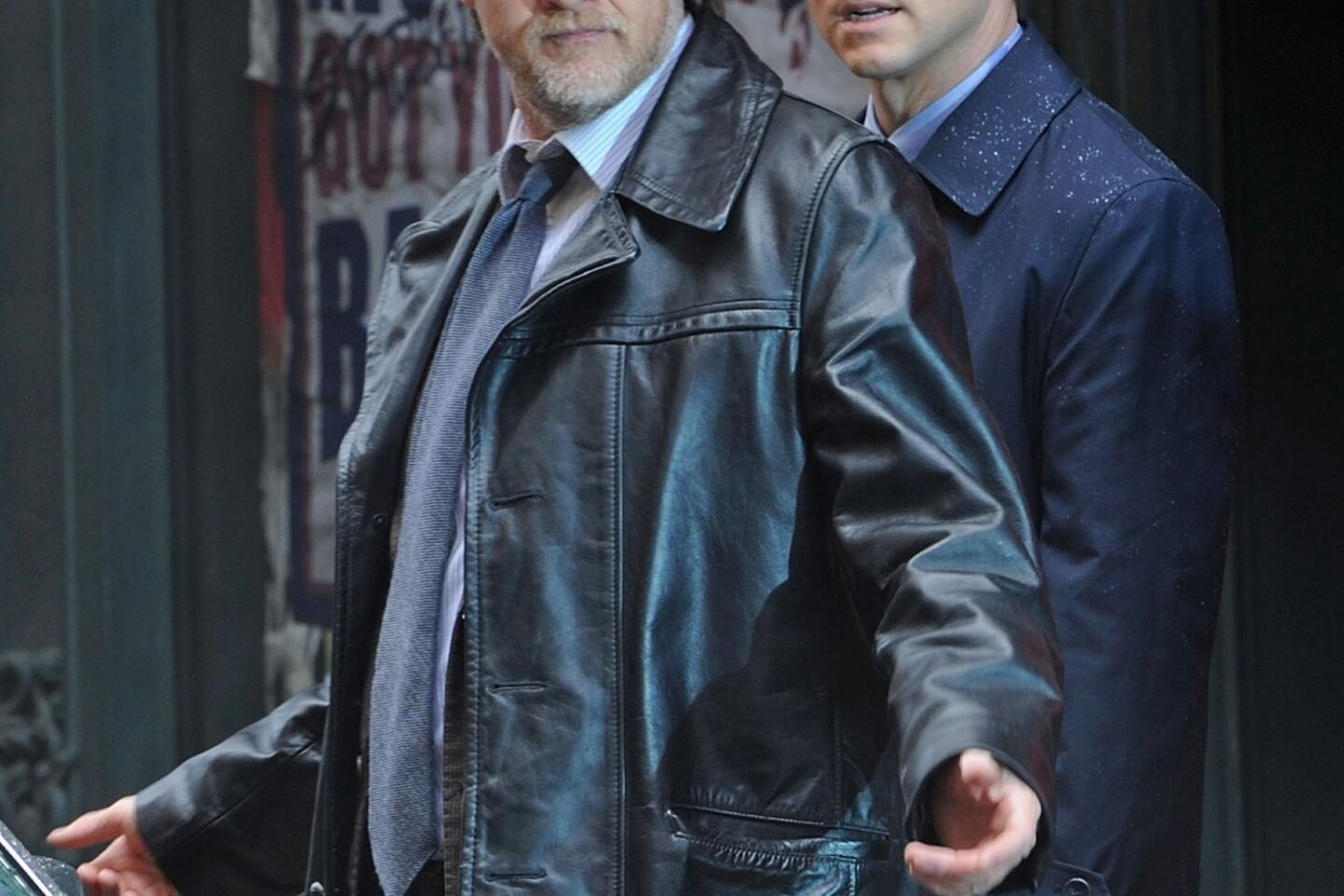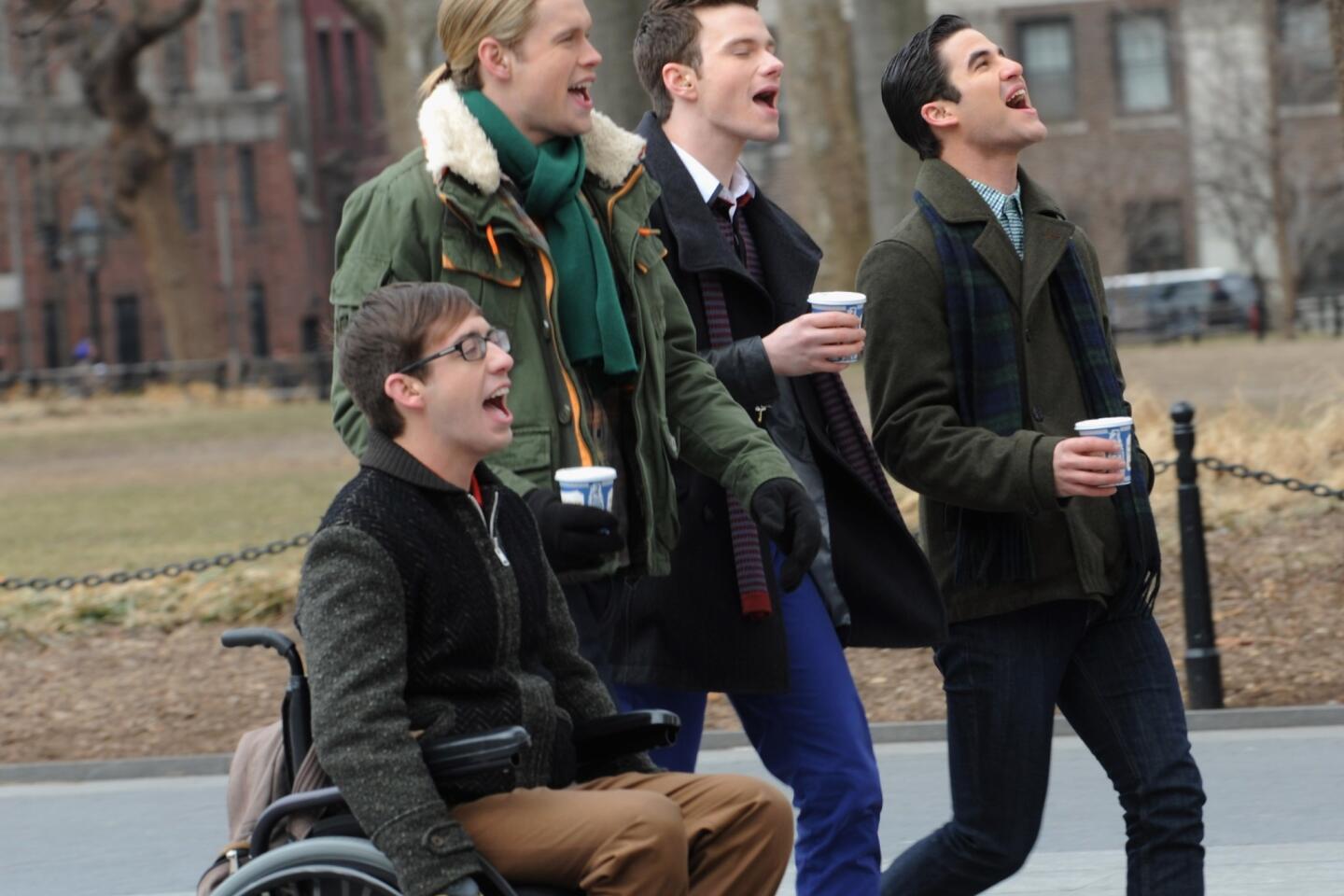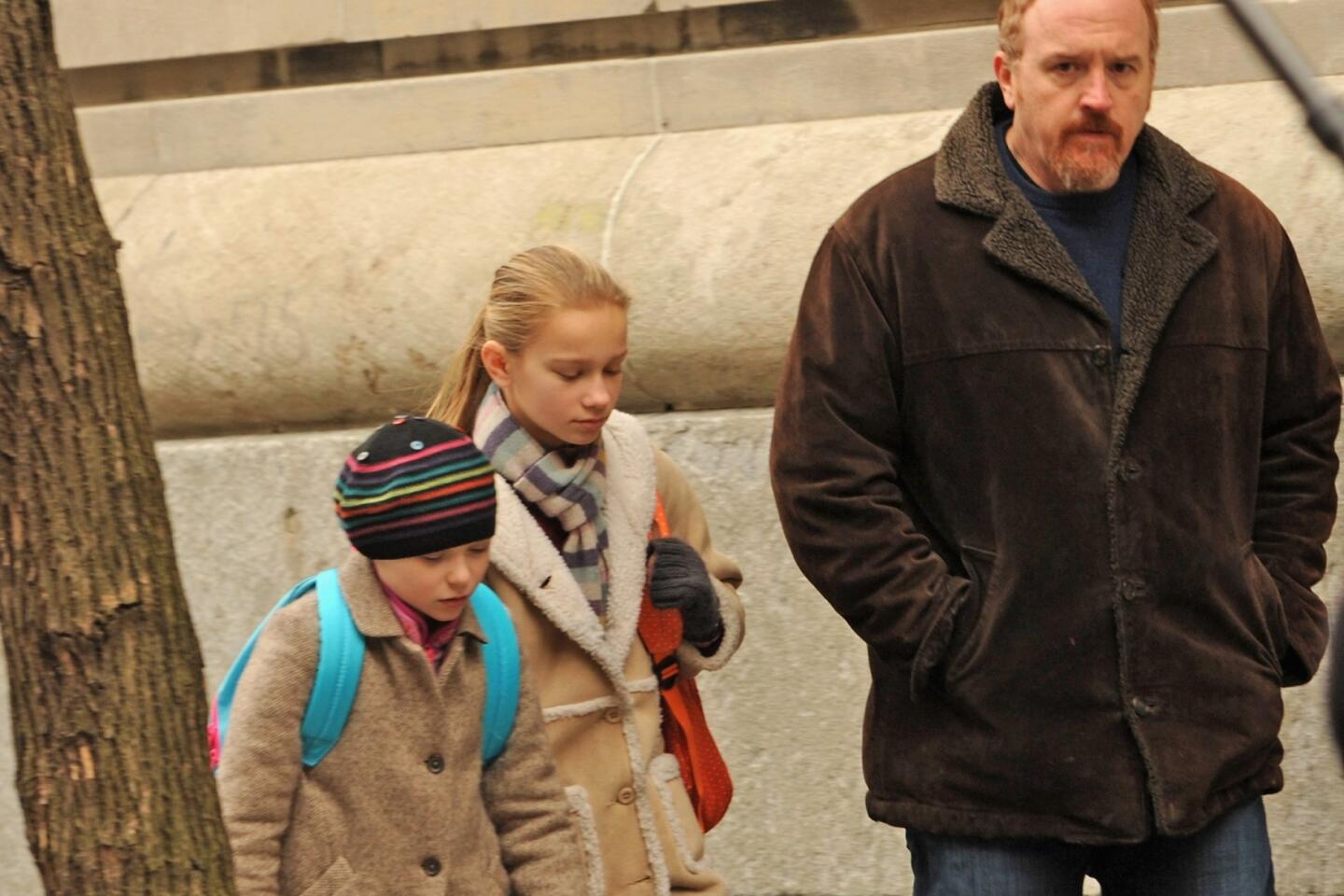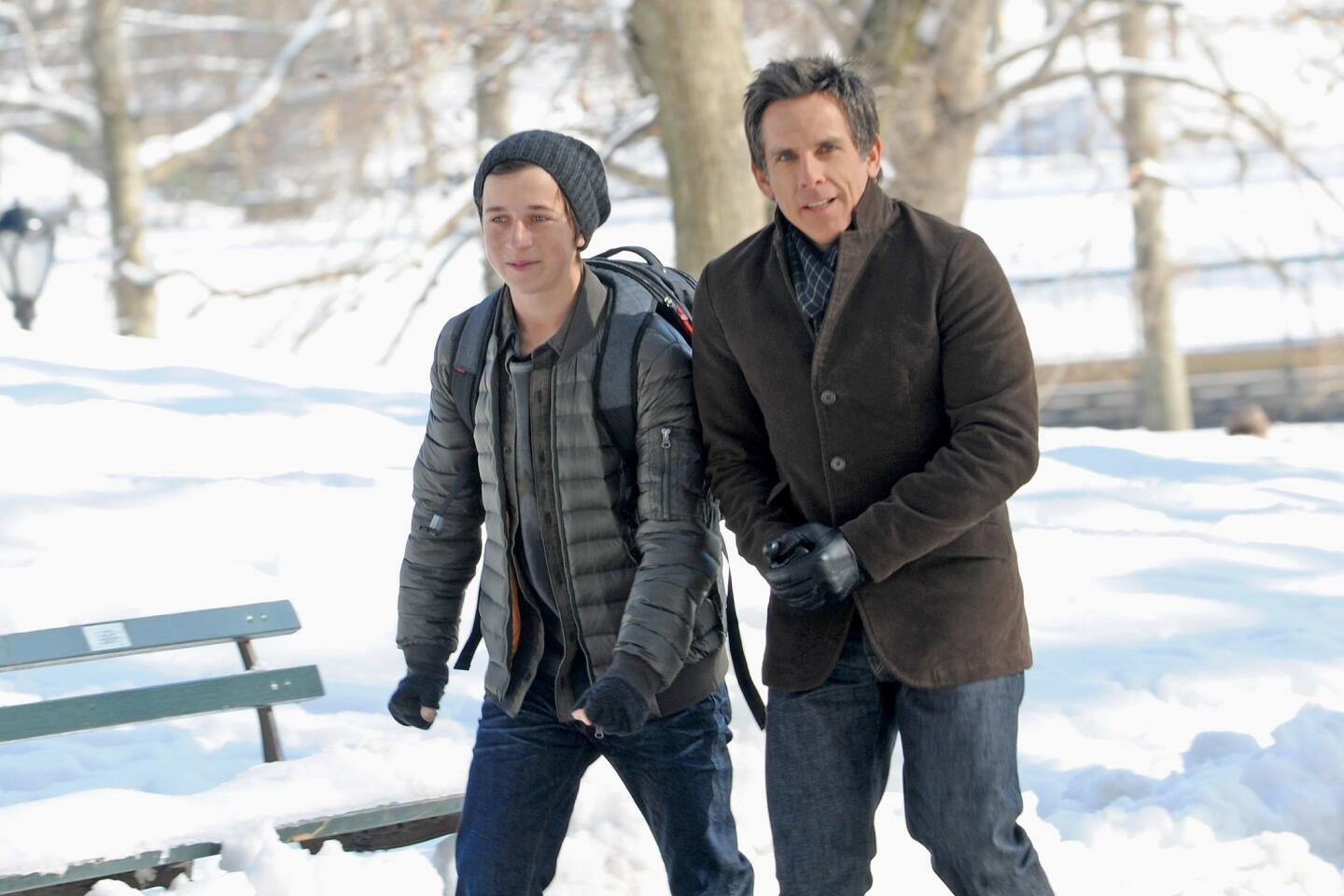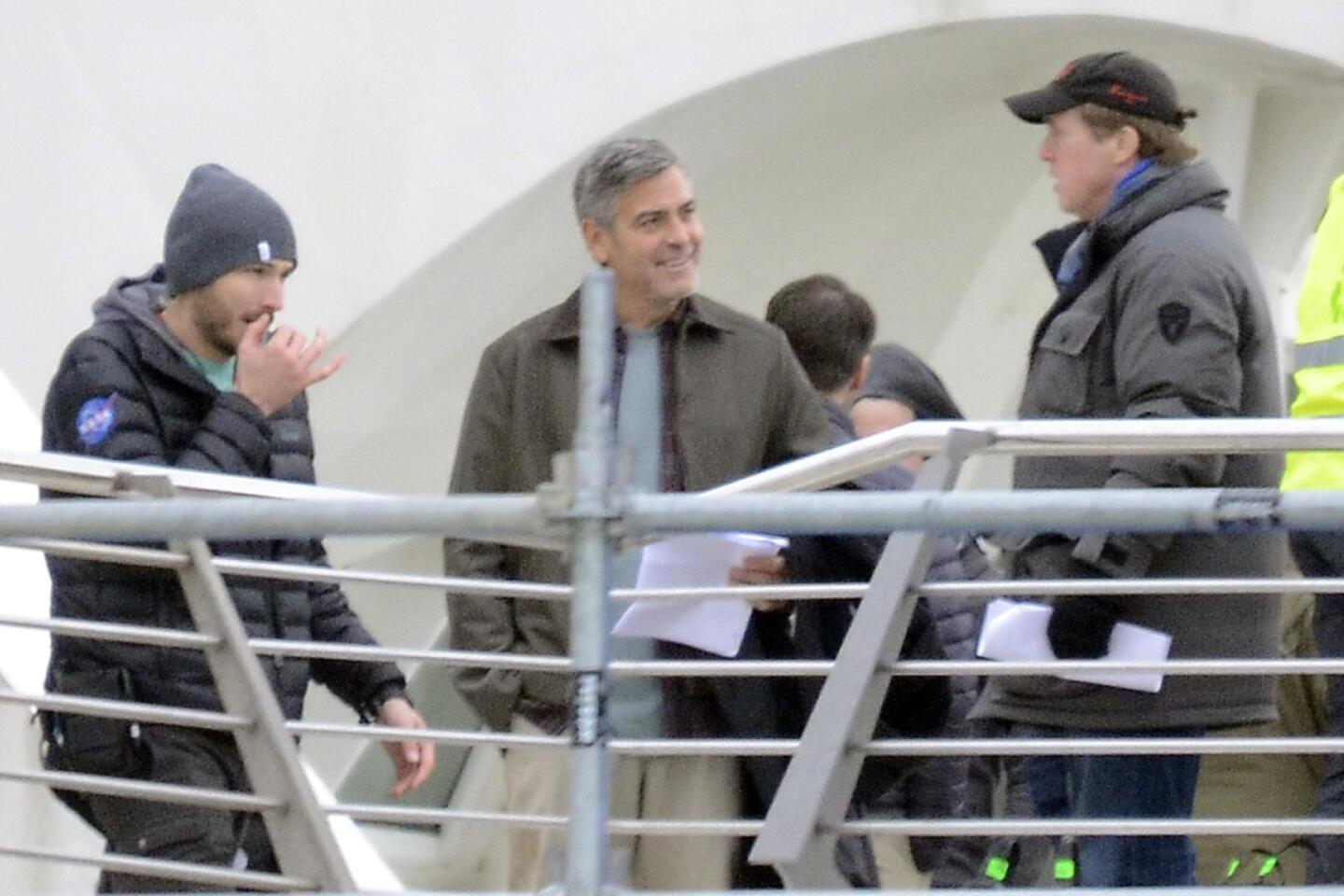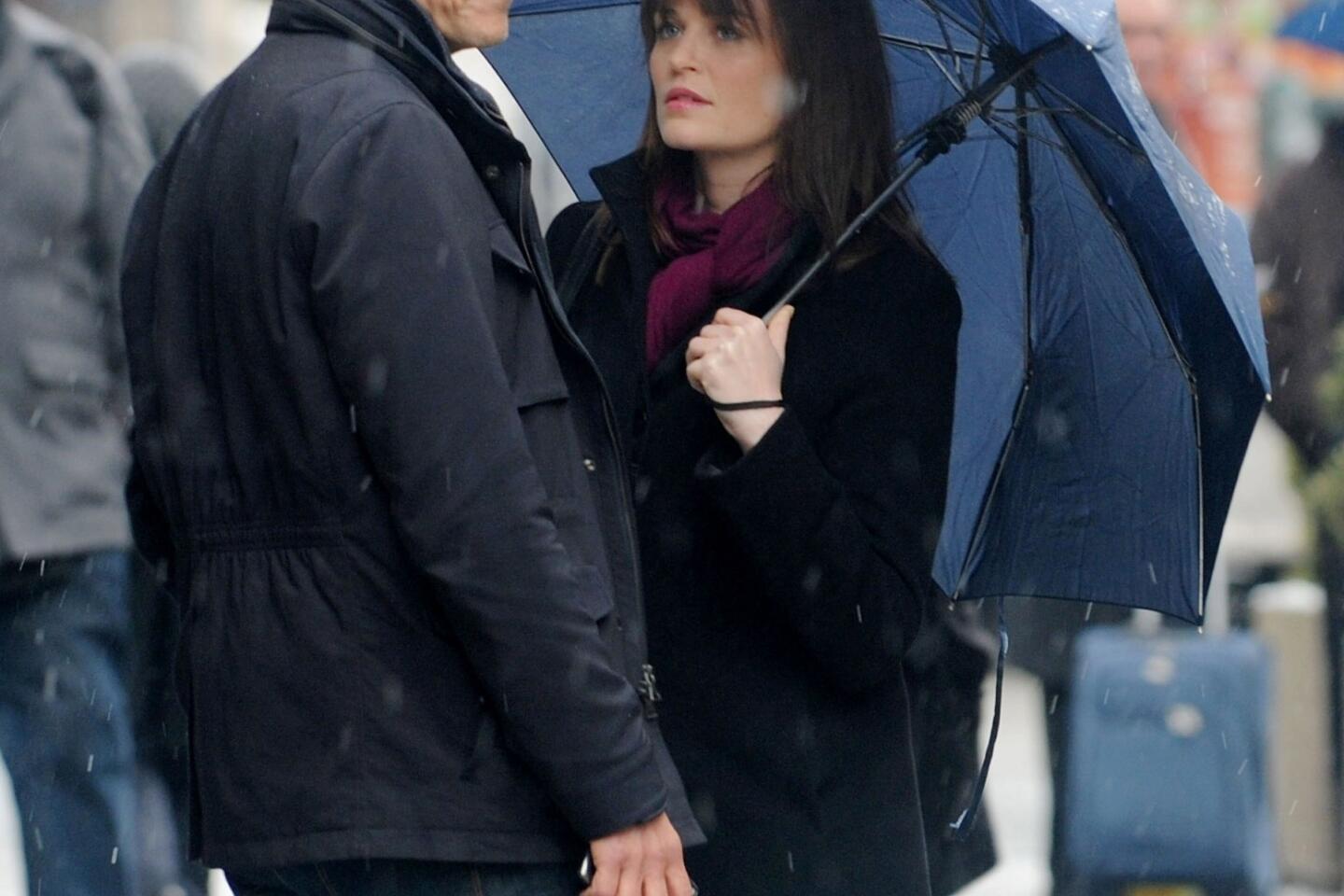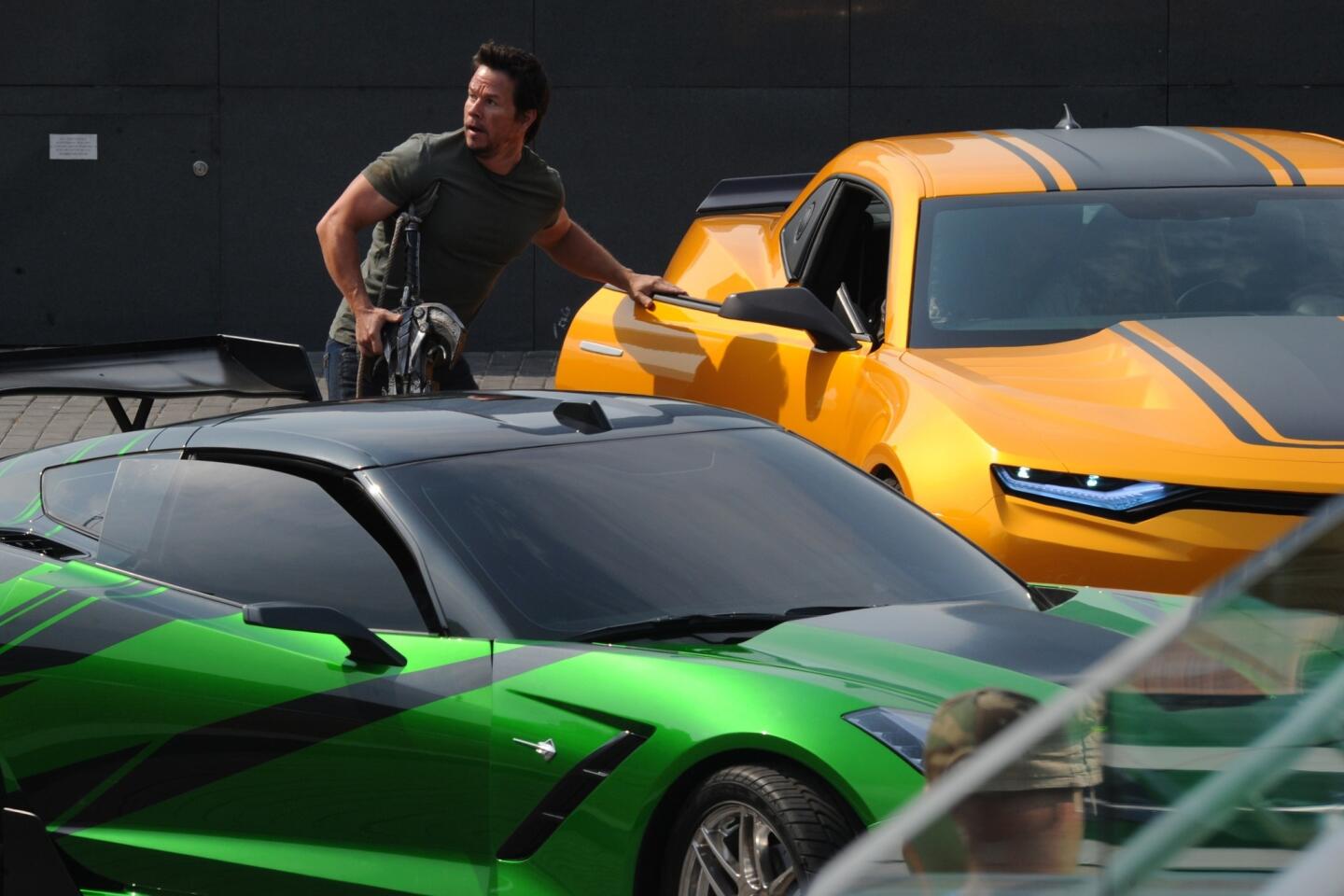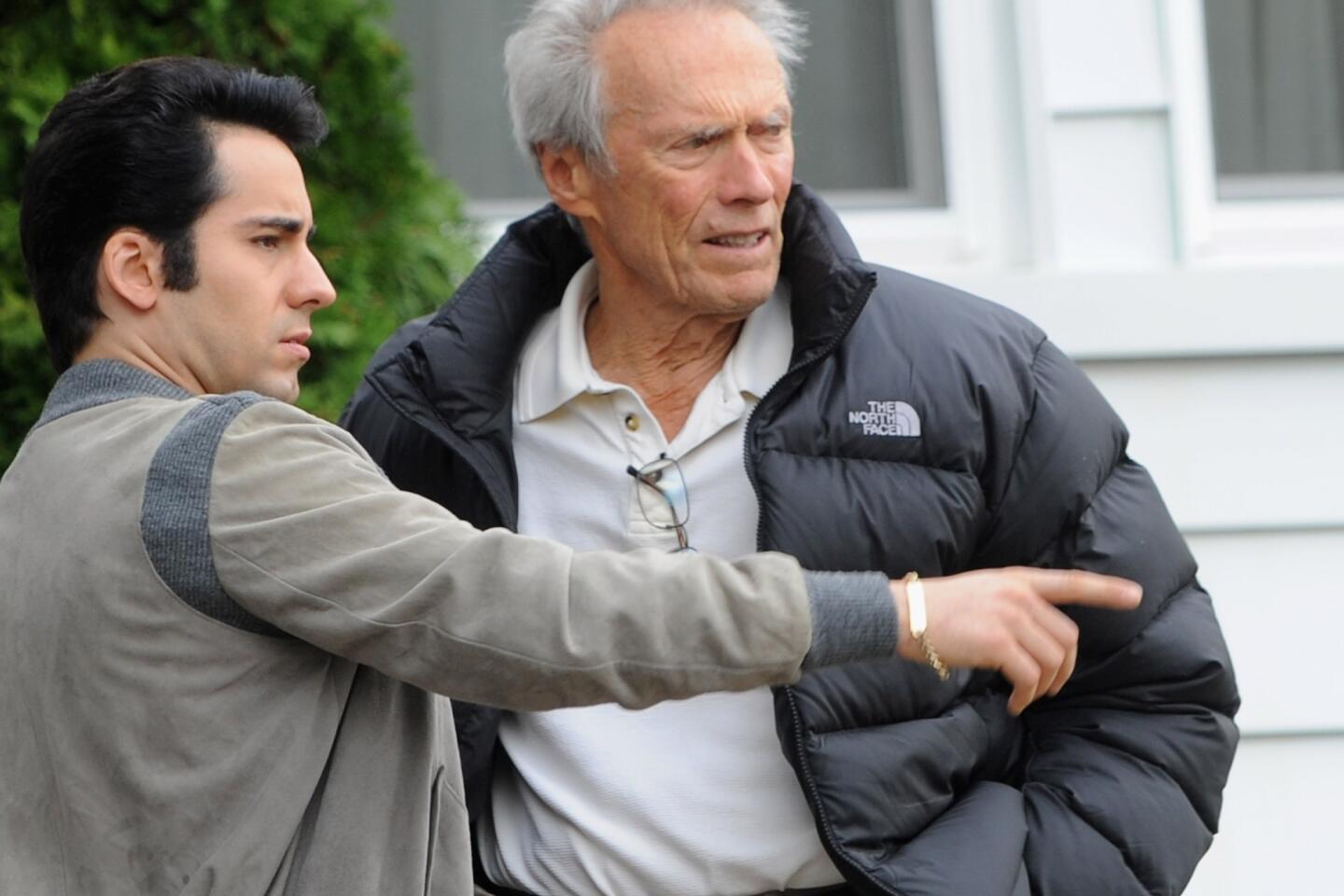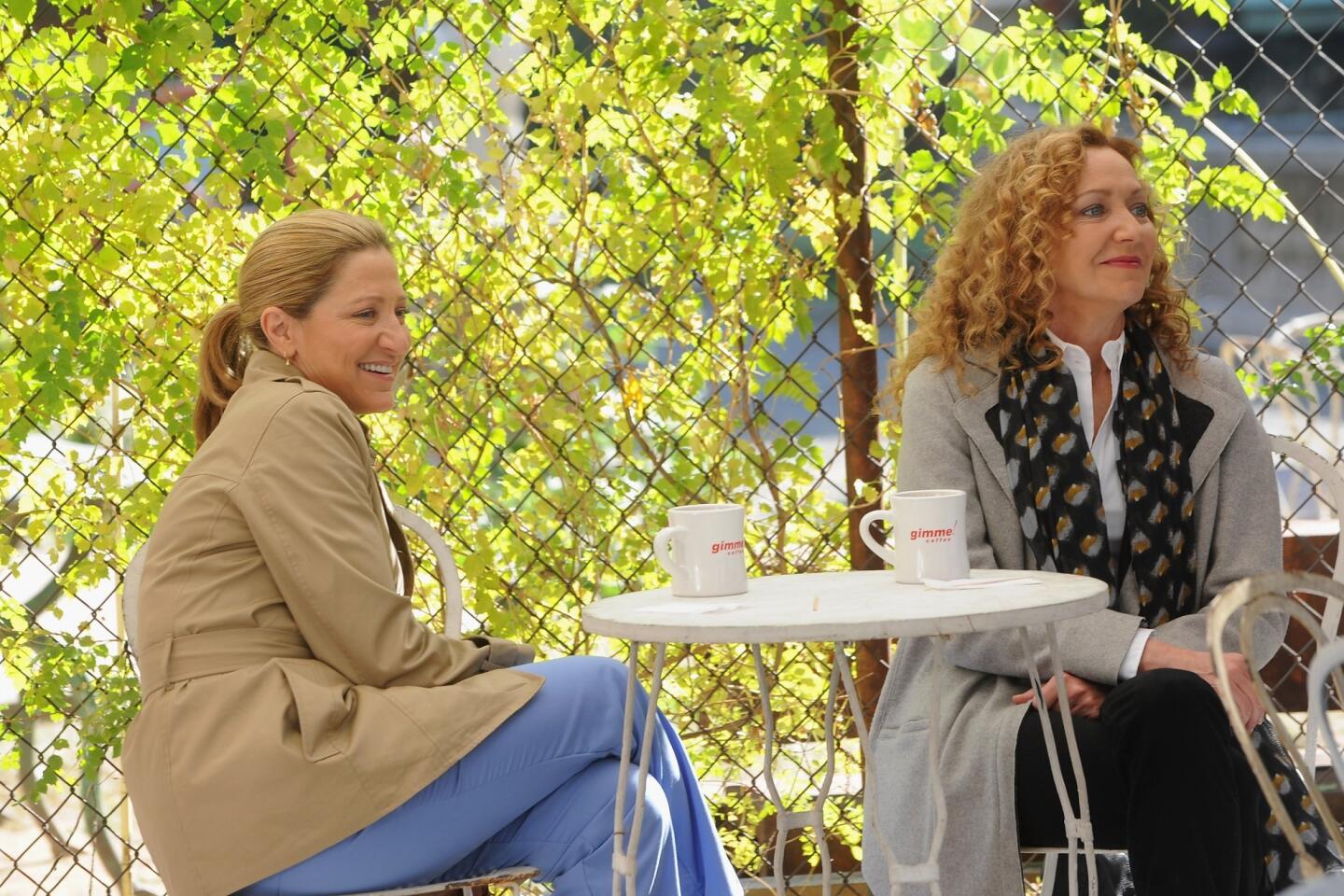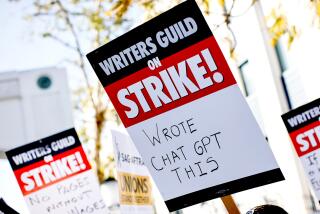L.A.’s mayor-elect aims to put Hollywood center stage
In a closed-door meeting on the Sony Pictures Entertainment lot, a few dozen location scouts, agents, producers and studio executives gathered to discuss the state of L.A.’s hometown industry.
Taking center stage: Los Angeles Mayor-elect Eric Garcetti.
Garcetti held the meeting recently to solicit ideas on how he can help stem the exodus of film and TV production from Southern California. He pledged to fight runaway production and to name a film czar to serve as an industry advocate in City Hall.
PHOTOS: Hollywood Backlot moments
Although reversing the loss of film production is beyond the power of a single politician, the fact that Garcetti was reaching out to the industry before even taking office was seen as a positive sign by his audience, according to people at the meeting. Several contrasted Garcetti’s stance with that of outgoing Mayor Antonio Villaraigosa, who also contemplated naming a film czar but never followed through.
“There was a lot of disappointment that filming didn’t appear to be a huge priority for” Villaraigosa, said location manager Chris Baugh, whose credits include the Oscar-winning film “Argo.”
“I feel pretty good about Garcetti,” Baugh said. “He seems to be working hard to understand the problem and bring filming back to L.A.”
Garcetti has taken other steps as well, including meeting with Gov. Jerry Brown and Senate President Pro Tem Darrell Steinberg (D-Sacramento) to advocate strengthening California’s tax credits for location filming to make them more competitive with other states.
“After school funding, this is my No. 1 statewide priority,” Garcetti told The Times editorial board. “We can’t take the industry for granted. It’s crazy how we’ve neglected our brand.”
Garcetti plans to take a page from New York Mayor Michael R. Bloomberg, who regularly touts his city’s pro-film stance and its Made in New York program, which gives filmmakers free advertising on bus shelters, subways and in-taxi TV programs. The city’s film sector now generates more than $7 billion in spending a year, up more than $2 billion from 2002.
ON LOCATION: Where the cameras roll
As New York and other cities have gained production, however, Los Angeles has continued to see declines in its share of the business over the last decade. But Villaraigosa defended his record as mayor.
“One of the most important things that we can do is to support more film tax credits, and I’ve been one of the leaders of that effort since the 1990s,” Villaraigosa said. “We’ve been able to get film credits passed at the state level. I spearheaded that with other legislative leaders, and I also spearheaded the extension.”
But Villaraigosa acknowledged there is “a lot of work to do” in stemming the erosion of L.A.’s film industry.
“I think Eric is going to do a great job building on the things we’ve done in the past,” Villaraigosa said. “He’s right to focus on film and the entertainment industry. I’m very supportive of his efforts.”
Garcetti, who represented the Hollywood area on the City Council, said the film czar could serve as a liaison to the industry, much as film commissioners do in other states. That appointee would promote the city as a filmmaking destination, serve as a troubleshooter for the local industry and lobby lawmakers in Sacramento to beef up the film-incentive program.
Much is at stake. Location-based feature film production in Los Angeles has plunged nearly 60% in the last 15 years, and TV drama production dropped 20% last year as crews migrated to Canadian and U.S. cities — especially Atlanta, New Orleans and New York — in search of better tax credits.
New York state for example, allocates $420 million annually to qualifying production companies — dwarfing the $100 million offered by California. This year NBC announced its “Tonight Show” would move to New York in February, in part to take advantage of an amendment to the state’s incentive program that made such talk shows eligible for a 30% credit on production costs.
“We have to figure out a better way to beat everyone over the head so they each do the right thing, so they invest here and stay here,” Garcetti said during his recent meeting at The Times.
He cited leadership roles played by figures such as former New Mexico Gov. Bill Richardson, who championed that state’s successful film program and would personally meet with filmmakers to show his support.
“More than just tax credits, other states are starting to build the infrastructure and the postproduction” facilities, Garcetti said. “These places are going to permanently take away this industry soon.”
Garcetti already has reached out to lawmakers in Sacramento, engaging in a “spirited debate about tax credits and their importance” with Steinberg and shared his concerns with Gov. Brown, who he said did not include entertainment among his top five industries in the state.
In September, the state approved a two-year extension of the current $100-million film and TV credit, short of the five-year extension the industry wanted, amid opposition from groups such as the California Teachers Assn.
PHOTOS: Celebrities by The Times
“We have to methodically educate folks in Sacramento about this,” Garcetti said.
Garcetti has deep ties to the film industry — and a handful of film and TV credits. He played himself in the 2012 Jake Gyllenhaal cop movie “End of Watch” and in the soap opera “All My Children,” and he had a cameo as the mayor of L.A. in “The Closer” — for which his father, former L.A. County Dist. Atty. Gil Garcetti, was a consulting producer. He also played the mayor last year in an episode of “Major Crimes.”
As a councilman, he pushed a plan to waive fees the city charges producers of TV pilots (the city has yet to implement the plan, which was approved by the City Council). He also made runaway production a key plank in his campaign, drawing sizable campaign donations from the arts and entertainment community.
His predecessor was not as bullish on Hollywood, which had a lukewarm and at times testy relationship with Villaraigosa.
The mayor did not attend a December 2010 event held at Los Angeles Center Studios to launch a marketing campaign, dubbed Film Works, to promote filming in L.A.
But Garcetti did — and spoke at the event in his capacity as council president.
Although the city did take some steps under Villaraigosa’s administration to become more film friendly — offering free parking on city-owned lots and installing electrical power nodes downtown — Villaraigosa was criticized by some for not highlighting their concerns.
“There was a lot of frustration” with Villaraigosa, said Ed Duffy, business agent for Teamsters Local 399, which represents casting directors, location managers and drivers. “There was a lot of talk and not much follow-through. We welcome [Garcetti’s] involvement and the fact that this is a topic of conversation.”
More to Read
From the Oscars to the Emmys.
Get the Envelope newsletter for exclusive awards season coverage, behind-the-scenes stories from the Envelope podcast and columnist Glenn Whipp’s must-read analysis.
You may occasionally receive promotional content from the Los Angeles Times.
